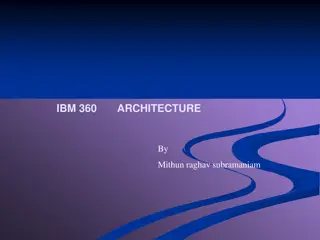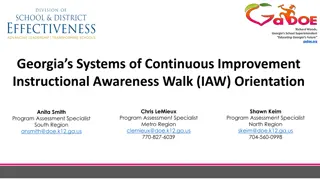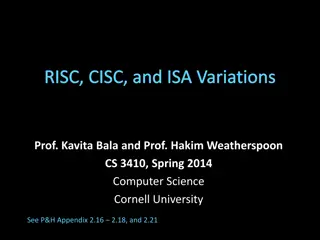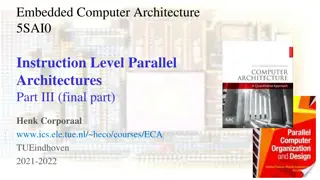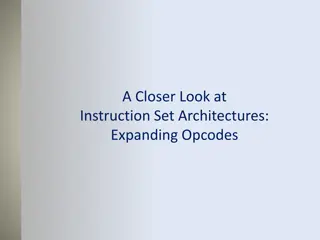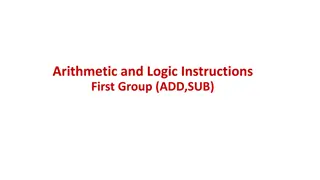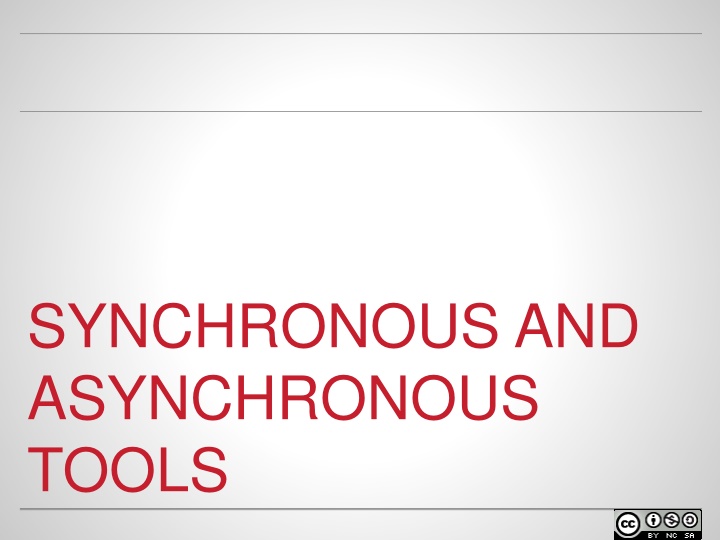
Exploring Synchronous and Asynchronous Educational Technologies
Discover the differences between synchronous and asynchronous tools in educational technology. Evaluate, choose, and apply these tools for effective course design. Dive into key considerations and engage in group discussions on technology selection.
Download Presentation

Please find below an Image/Link to download the presentation.
The content on the website is provided AS IS for your information and personal use only. It may not be sold, licensed, or shared on other websites without obtaining consent from the author. If you encounter any issues during the download, it is possible that the publisher has removed the file from their server.
You are allowed to download the files provided on this website for personal or commercial use, subject to the condition that they are used lawfully. All files are the property of their respective owners.
The content on the website is provided AS IS for your information and personal use only. It may not be sold, licensed, or shared on other websites without obtaining consent from the author.
E N D
Presentation Transcript
SYNCHRONOUS AND ASYNCHRONOUS TOOLS
WELCOME o Facilitator name Position at university Contact info
LEARNING OUTCOMES By the end of this module, you should be able to: o Evaluate a variety of educational technologies on the basis of hands-on experience with a number of different tools o Apply one synchronous and one asynchronous tool in the design of a course/module o Explain your choice of educational technology
AGENDA o Defining educational technology tools Synchronous vs. asynchronous tools o Selecting educational technologies SECTIONS model for selecting technology Learning outcomes and technology
DEFINING EDUCATIONAL TECHNOLOGY TOOLS
WHAT ARE SYNCHRONOUS AND ASYNCHRONOUS TOOLS? o Working with a partner, define synchronous and asynchronous tools. o Reflect on when you might use each type in your own courses, then share with the whole group.
CHOOSING EDUCATIONAL TECHNOLOGY Video o Finding the Best Uses of New Instructional Technologies
EDUCATIONAL TECHNOLOGIES Brainstorm a list of educational technologies available to you and divide them according to the headings below. Synchronous Tools Asynchronous Tools o Chat o Discussion Forums o o
SELECTING EDUCATIONAL TECHNOLOGIES
SELECTING EDUCATIONAL TECHNOLOGIES Video o Key factors in selecting educational technology
DISCUSSION o What are some of the most important considerations in choosing technology for the classroom?
SECTIONS FRAMEWORK S E C T I O N S Students Ease of use Cost Teaching; learning Interactivity Organizational Issues Novelty Speed
ACTIVITY: APPLYING SECTIONS o Using the tool provided by your facilitator, individually apply the different parts of the SECTIONS framework from the document as if you were using it in your course o Compare your findings with a partner, then as a group
LEARNING OUTCOMES & TECHNOLOGY Learning Outcomes Constructive Alignment Feedback and Assessment Methods Teaching and Learning Activities
POPULAR TECHNOLOGY TOOLS Video
CHOOSE A TOOL o Take one learning outcome you have developed for your course or module. o Based on what has been covered, choose one synchronous and/or one asynchronous tool and design a learning activity for each. You should justify your choices.
SUMMARY o Synchronous technology allows for real-time communication between participants o Asynchronous technology allows for communication distributed over intervals of time o SECTIONS model is a framework used to select appropriate technologies o Educational technology should support activities and assessments that align with learning outcomes
THANK YOU o Questions? o Comments? o Help? Contact information facilitator s and departmental
REFERENCES Groom, M. (2013). History of Synchronous Technology in Distance Education (Prezi presentation). Retrieved from http://prezi.com/cqnppnik3kma/synchronous-distant- education/. Higley, M. (2013). Benefits of Synchronous and Asynchronous eLearning. Retrieved from http://elearningindustry.com/benefits-of-synchronous- and- asynchronous-e-learning. Hrastinski, S. (2008). Asynchronous and Synchronous EL-earning. EDUCAUSE Quarterly, 31 (4). Retrieved from http://www.educause.edu/ero/article/asynchronous-and- synchronous-e-learning. 1. 2. 3.
REFERENCES Johns Hopkins University School of Education, Center for Technology in Education. (2010). Synchronous vs. Asynchronous Distance Learning Activities. Retrieved from http://olms.cte.jhu.edu/olms/data/resource/7643/Sync hronous%20vs%20Asynchronous%20Learning%20Activit ies.pdf. Karbach, M. (2014) 10 Great Screen Capture Web Tools for Students and Teachers. Retrieved from http://www.educatorstechnology.com/2014/01/10-great-screen- capture-web-tools-for.html. Karbach, M. (n.d.) Teacher Guides. Retrieved from http://www.educatorstechnology.com/p/teacher-guides.html. Karbach, M. (n.d.) Teacher Tools. Retrieved from http://www.educatorstechnology.com/p/teacher-tools.html. 4. 5. 6. 7.
REFERENCES 8. Pearson Higher Education. (2012, December 6). Finding the best uses of new instructional technologies. Retrieved April 9, 2014, from http://www.youtube.com/watch?v=mEoVuubeDoM. 9. Slatinsky, D. (2013). Synchronous Vs. Asynchronous: How to Pick Your Training Delivery Method. Learning Solutions Magazine. Retrieved from http://www.learningsolutionsmag.com/articles/1197/synchronous -or-asynchronous-how-to-pick-your-training-delivery-method. 10. University of Toronto. (n.d.) An Overview of Synchronous and Asynchronous Communication Styles. Retrieved from http://ctl.utsc.utoronto.ca/technology/communication_styles. 11. Wilson, S. (2009). SECTIONS Analysis of Online Education. Retrieved from http://www.scribd.com/doc/17467100/SECTIONS-Analysis- of- Online-Education.

